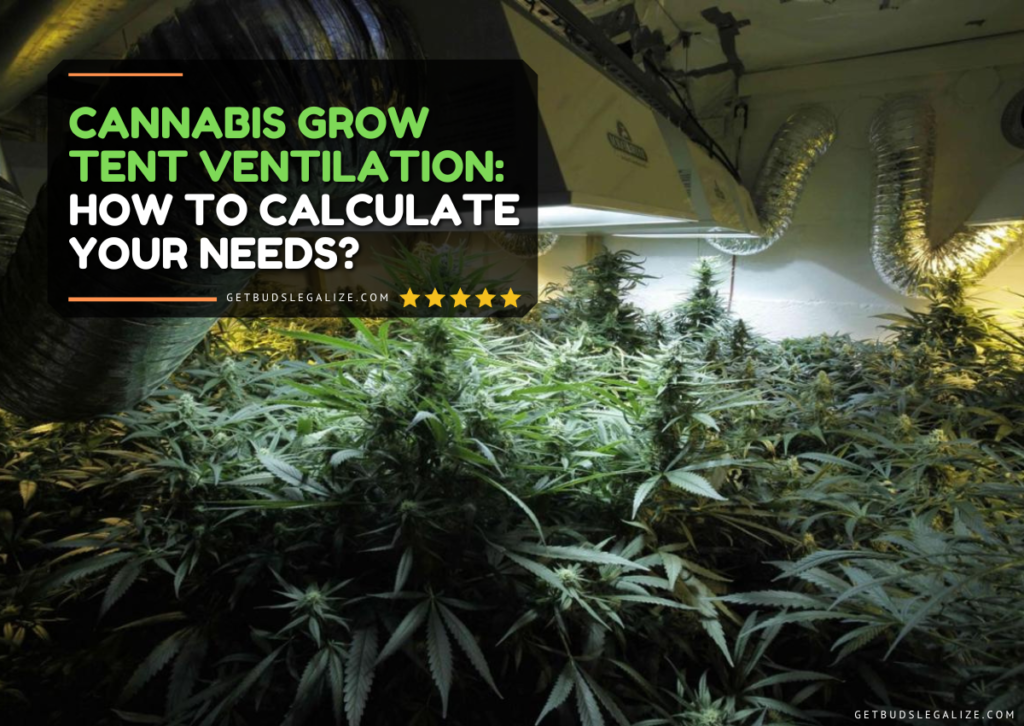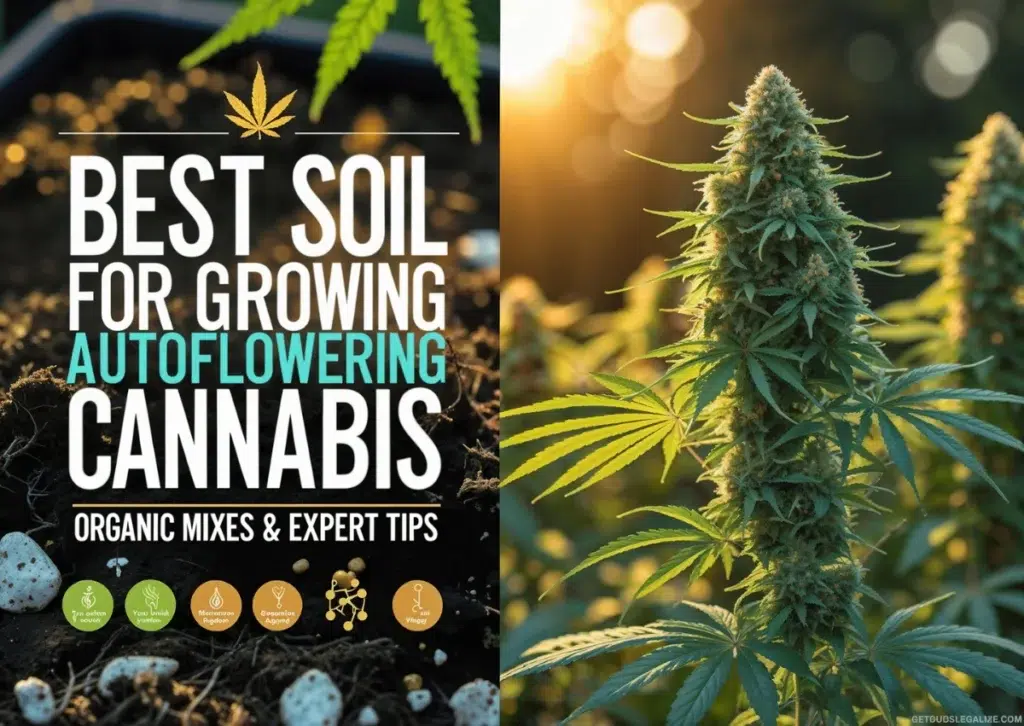Cannabis Grow Tent Ventilation: How to Calculate Your Needs?
If you are growing cannabis indoors, one of the most important factors to consider is ventilation. Proper ventilation ensures that your plants get enough fresh air, carbon dioxide, and oxygen, while also removing excess heat, humidity, and odors. In this blog post, we will explain why ventilation is vital for cannabis plants, how to understand grow tent ventilation, how to choose between passive and active intake, how to calculate the optimal air extractor fan size for your grow room, and how to set up ventilation in different types of grow spaces.
Why Is Proper Ventilation Vital for Cannabis Growing?
Ventilation is essential for several reasons:
- Cannabis plants need carbon dioxide (CO2) to perform photosynthesis, the process of converting light into energy and sugars. Without enough CO2, your plants will grow slowly and produce less yield. Ventilation brings fresh air into your grow room, which contains about 400 ppm of CO2.
- Cannabis plants also need oxygen (O2) to breathe and metabolize nutrients. Oxygen is especially important for the roots, which need a well-aerated growing medium to avoid root rot and fungal infections. Ventilation helps to circulate oxygen throughout your grow room and prevent stagnant air pockets.
- Ventilation also helps to regulate the temperature and humidity levels in your grow room. Cannabis plants prefer a warm and humid environment, but not too hot or too wet. Excessive heat can cause heat stress, wilting, leaf curling, and reduced potency. Excessive humidity can cause mold, mildew, bud rot, and pest infestations. Ventilation helps to remove excess heat and moisture from your grow room and maintains a comfortable climate for your plants.
- Ventilation also helps to control the odor of your cannabis plants. Cannabis plants produce terpenes, aromatic compounds that give them their distinctive smell and flavor. While some growers enjoy the smell of their plants, others may want to keep it discreet or avoid bothering their neighbors. Ventilation helps to filter out the odor of your plants using carbon filters or other methods.
Understanding Grow Tent Ventilation
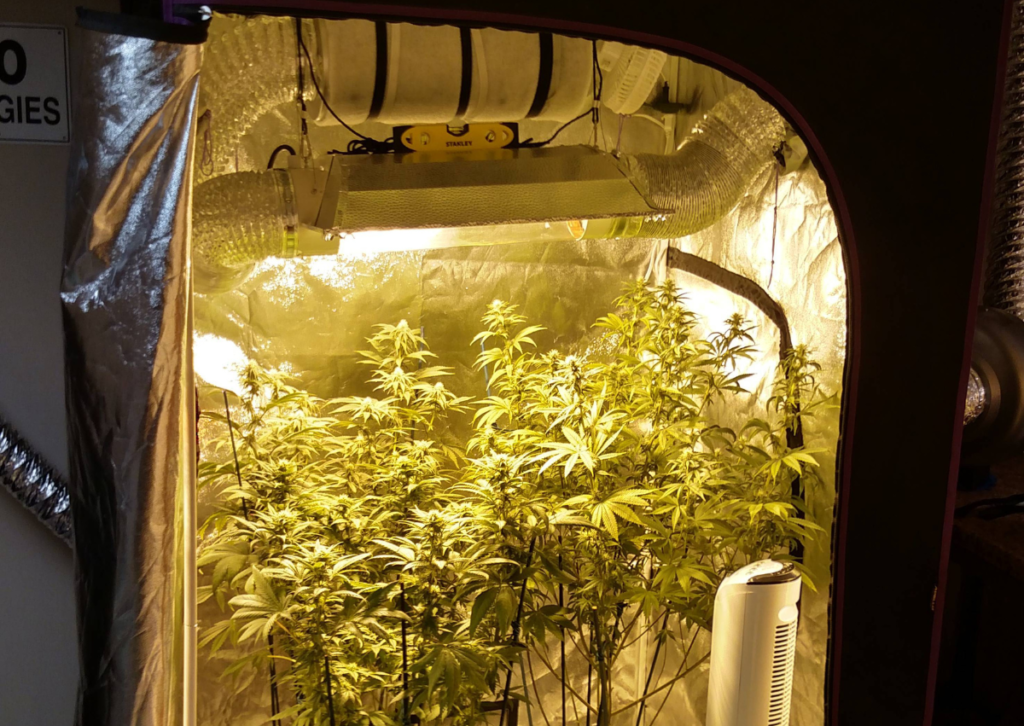
Grow tent ventilation consists of two main components: intake and exhaust. Intake is the process of bringing fresh air into your grow room, while exhaust is the process of removing stale air from your grow room.
Air intake can be either passive or active. Passive air intake relies on natural air pressure differences between the inside and outside of your grow room to create airflow. Passive intake is usually achieved by opening vents or holes in your grow tent or grow space. Active air intake uses a fan to force fresh air into your grow room. Active intake is usually used in larger or more sealed grow spaces that require more airflow.
The exhaust is always active and requires a fan to suck out the stale air from your grow room. The exhaust fan is usually connected to a ducting system that leads the air outside or to another room. The exhaust fan should also be connected to a carbon filter or other odor control device to eliminate the smell of your plants.
Cannabis Transpiration
One of the factors that affect ventilation is transpiration. Transpiration is the process of water loss from the leaves of plants through tiny pores called stomata. Transpiration helps plants cool down and transport nutrients throughout their tissues.
Cannabis plants transpire a lot of water, especially during the flowering stage when they produce large buds. A single cannabis plant can transpire up to 1 liter of water per day. This means that a growing room with several plants can produce a lot of moisture that needs to be removed by ventilation.
Warmth From Grow Lights
Another factor that affects ventilation is the heat generated by your grow lights. Different types of lights produce different amounts of heat. For example, high-intensity discharge (HID) lights such as metal halide (MH) or high-pressure sodium (HPS) produce a lot of heat and require more ventilation than light-emitting diode (LED) lights or compact fluorescent lamps (CFLs).
The heat from your lights can raise the temperature in your grow room significantly, especially if you have a small or poorly insulated space. High temperatures can stress your plants and reduce their quality and yield. Therefore, you need adequate ventilation to remove the excess heat from your grow room and keep it within the optimal range for cannabis growth.
Choosing Between Passive and Active Intake
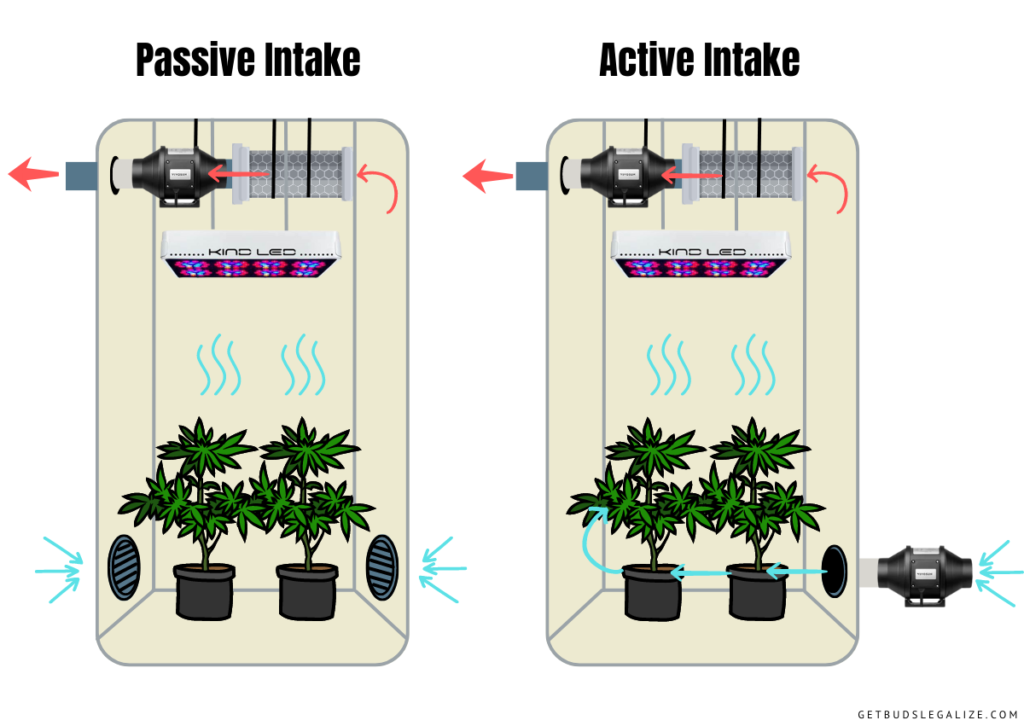
The choice between passive and active intake depends on several factors, such as the size of your grow area, the number and type of your plants, the type and wattage of your growing lights, the climate in your area, and your budget.
As a general rule of thumb, passive intake is sufficient for small or medium-sized grow tents with low-wattage LED or CFL lights and a few plants. Passive intake is also cheaper and easier to set up than active intake.
Active intake is recommended for larger or more sealed grow spaces with high-wattage HID lights and many plants. Active intake is also better for areas with hot or humid climates, where passive intake may not provide enough fresh air for your plants. Active intake is more expensive and complex to set up than passive intake, but it offers more control and efficiency.
The Basics of Air Extractor Fan Systems
An air extractor fan system is the core of your grow room ventilation. It consists of four main components: the fan, the ducting, the filter, and the speed controller.
- The fan is the device that creates the airflow in your grow room. It should be powerful enough to exchange the air in your grow room at least once every 1-3 minutes, depending on the size of your space and the heat and humidity levels. The fan should also be quiet and durable, as it will run continuously for long periods of time.
- The ducting is the tube that connects the fan to the outside or to another room. It should be as short and straight as possible, to reduce air resistance and noise. The ducting should also be insulated and light-proof, to prevent heat loss and light leaks.
- The filter is the device that removes the odor of your plants from the air. It should be compatible with your fan size and airflow rate, and it should have enough capacity to last for at least one grow cycle. The most common type of filter is a carbon filter, which uses activated charcoal to absorb the smell of your plants. Other types of filters include ozone generators, ionizers, or scrubbers.
- The speed controller is the device that allows you to adjust the speed and power of your fan. It can help you save energy, reduce noise, and fine-tune the climate in your grow room. Some fans come with built-in speed controllers, while others require external ones.
How Many CFM Are Needed for Your Grow Room?
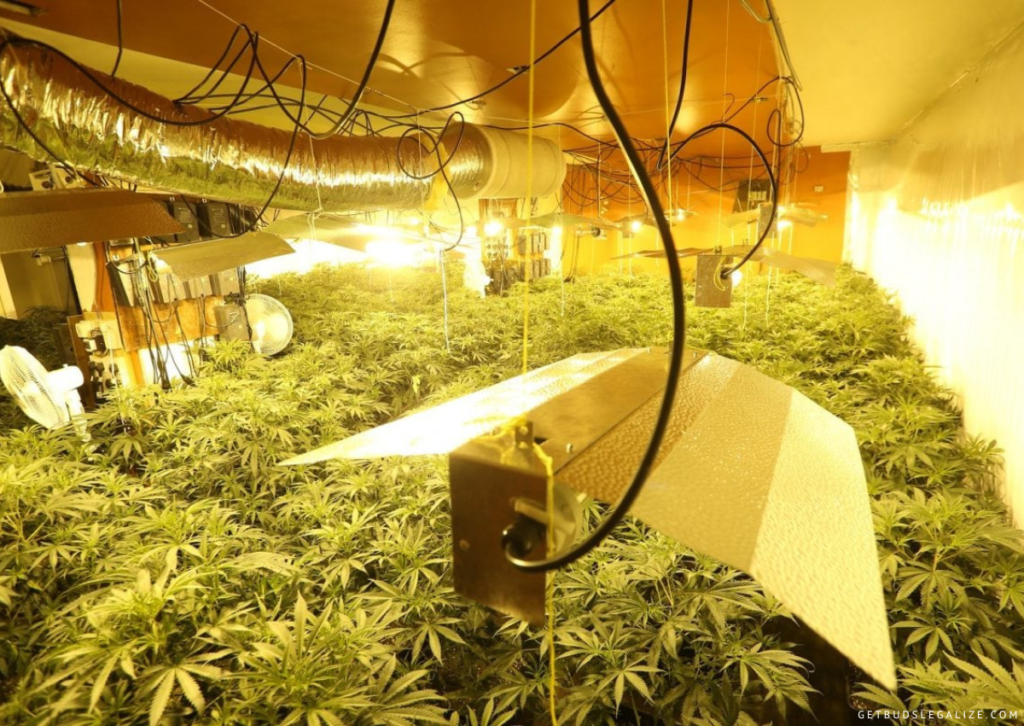
CFM stands for cubic feet per minute, and it is a measure of how much air your fan can move in a given time. To calculate how many CFM are needed in your grow room, you need to know two things: the volume of your grow space and the desired air exchange rate.
The volume of your grow space is simply the length x width x height of your grow tent or room, measured in feet. For example, if you have a 4 x 4 x 8 ft grow tent, the volume is 4 x 4 x 8 = 128 cubic feet.
The desired air exchange rate is how often you want to replace the air in your growing space with fresh air. This depends on several factors, such as the size and number of your plants, the type and wattage of your grow lights, and the climate in your area. As a general rule of thumb, you want to exchange the air in your grow space at least once every 1-3 minutes.
To calculate how many CFM you need for your grow room, simply multiply the volume of your grow space by the desired air exchange rate. For example, if you have a 128 cubic feet grow tent and you want to exchange the air every 2 minutes, you need 128 x (60 / 2) = 3840 CFM.
However, this is only a rough estimate that does not account for other factors that may affect your airflow, such as duct length, bends, filters, or intake fans. To account for these factors, you need to apply a correction factor to your CFM calculation.
A correction factor is a percentage that represents how much airflow is reduced by various obstacles in your ventilation system. For example, a carbon filter can reduce airflow by 20%, a bend in your ducting can reduce airflow by 10%, and an intake fan can increase airflow by 10%. To apply a correction factor to your CFM calculation, simply multiply it by (100 – correction factor) / 100.
For example, if you have a 3840 CFM fan with a carbon filter (20% reduction), two bends in your ducting (10% reduction each), and an intake fan (10% increase), you need to multiply 3840 by (100 – (20 + 10 + 10) + 10) / 100 = 0.8. This gives you a corrected CFM of 3840 x 0.8 = 3072 CFM.
Suggested Extraction Fan Sizes for Common Tent Sizes
To make things easier for you, we have compiled a table of suggested extraction fan sizes for common tent sizes, based on an average correction factor of 25%. These are only approximate values that may vary depending on your specific setup and conditions.
| Tent Size | Volume | Desired Air Exchange Rate | Est. CFM Needed | Suggested Fan Size |
| 2 x 2 x 5 ft | 20 cubic feet | Every minute | 1200 CFM | 4-inch fan |
| 2 x 4 x 6 ft | 48 cubic feet | Every minute | 2880 CFM | 6-inch fan |
| 3 x 3 x 6 ft | 54 cubic feet | Every minute | 3240 CFM | 6-inch fan |
| 4 x 4 x 7 ft | 112 cubic feet | Every minute | 6720 CFM | 8-inch fan |
| 5 x 5 x 8 ft | 200 cubic feet | Every minute | 12000 CFM | 10-inch fan |
Please note that these fan sizes are based on the assumption that you have a matching intake fan or passive intake vents. If you have a smaller intake than your exhaust, you may need a larger fan to compensate for the negative pressure. Also, if you have a lot of ducting, bends, or filters in your exhaust system, you may need a higher CFM rating to account for the airflow loss.
How to Correctly Set The Ventilation in The Grow Room
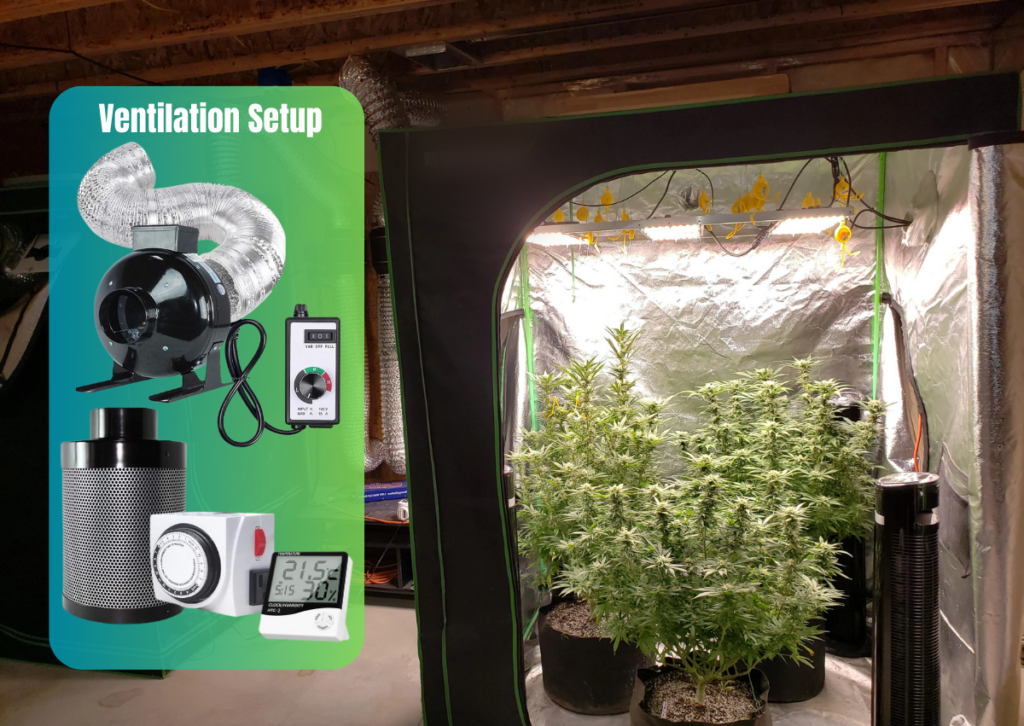
Once you have chosen your extraction fan, you need to install it in your grow room along with some other components, such as:
- An intake fan or passive vent
- A carbon filter
- A ducting system
- A fan speed controller
- A thermometer and hygrometer
The basic principle of setting up ventilation in your cannabis grow room is to create negative air pressure inside your tent or room. This means that the air going out of your grow space is more than the air coming in. This way, you can control the temperature, humidity, and odor of your grow environment and prevent any unwanted air from entering.
To create negative pressure, you need to place your extraction fan at the highest point of your grow space, preferably near the opposite side of your light source. This is because hot air rises and you want to remove it as quickly as possible. You also need to attach a carbon filter to your extraction fan to eliminate any odors from your plants. The carbon filter should be inside your grow space, not outside, to prevent any dust or debris from clogging it.
You also need to provide fresh air intake for your plants. You can either use another fan or a passive vent for this purpose. If you use another fan, you need to make sure that it has a lower CFM than your extraction fan, otherwise, you will create positive pressure instead of negative. If you use a passive vent, you need to make sure that it is large enough to allow enough airflow and that it is placed at the lowest point of your grow space, preferably near the opposite side of your extraction fan. This is because cold air sinks and you want to bring it in as efficiently as possible.
You also need to connect your fans and vents with ducting pipes that fit snugly and securely. You should avoid using duct tape or other materials that can leak or tear easily. You should also minimize the length and number of bends in your ducting system, as they can create resistance and reduce airflow.
You also need to use a fan speed controller to adjust the speed of your fans according to the temperature and humidity levels in your growing space. You should monitor these levels with a thermometer and hygrometer and aim for the optimal range for your plants’ stage of growth. Generally speaking, you want to keep the temperature between 70°F and 85°F and the humidity between 40% and 60% for most strains of cannabis.
How to Ventilate A Cannabis Grow Tent
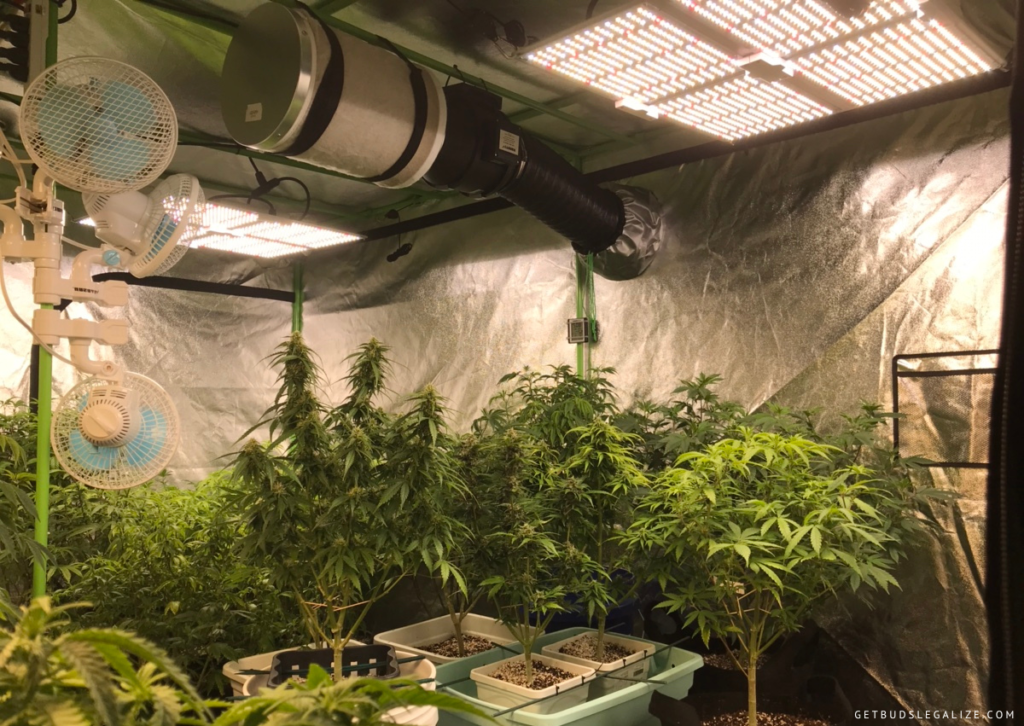
A cannabis grow tent is a convenient and affordable way to create a controlled environment for your plants. However, it also requires proper ventilation to prevent overheating, humidity issues, and odor problems.
The easiest way to ventilate a cannabis grow tent is to use an inline fan with a carbon filter and ducting. The inline fan should be attached to one of the upper vents of the tent and connected to a carbon filter outside the tent. The carbon filter will remove the odor from the exhaust air before it exits the tent.
The intake air can be drawn from another vent on the opposite side of the tent or from a passive vent at the bottom of the tent. The passive vent does not require a fan but relies on natural airflow and negative pressure created by the exhaust fan.
The size of the inline fans depends on the size of your tent and how many plants you have. You can use the same formula as above to calculate how many CFM you need for your tent. For example, if your tent is 4 feet long, 4 feet wide, and 6 feet high, it has a volume of 96 cubic feet. If you want 15 air exchanges per hour, you need 96 x 15 / 60 = 24 CFM.
However, since tents are usually more compact and have less airflow than rooms, you should double or triple this number to account for heat and humidity buildup. Therefore, you should look for an inline fan that has at least 50 to 70 CFM for a 4 x 4 x 6 tent.
How to Ventilate a Micro Cannabis Grow
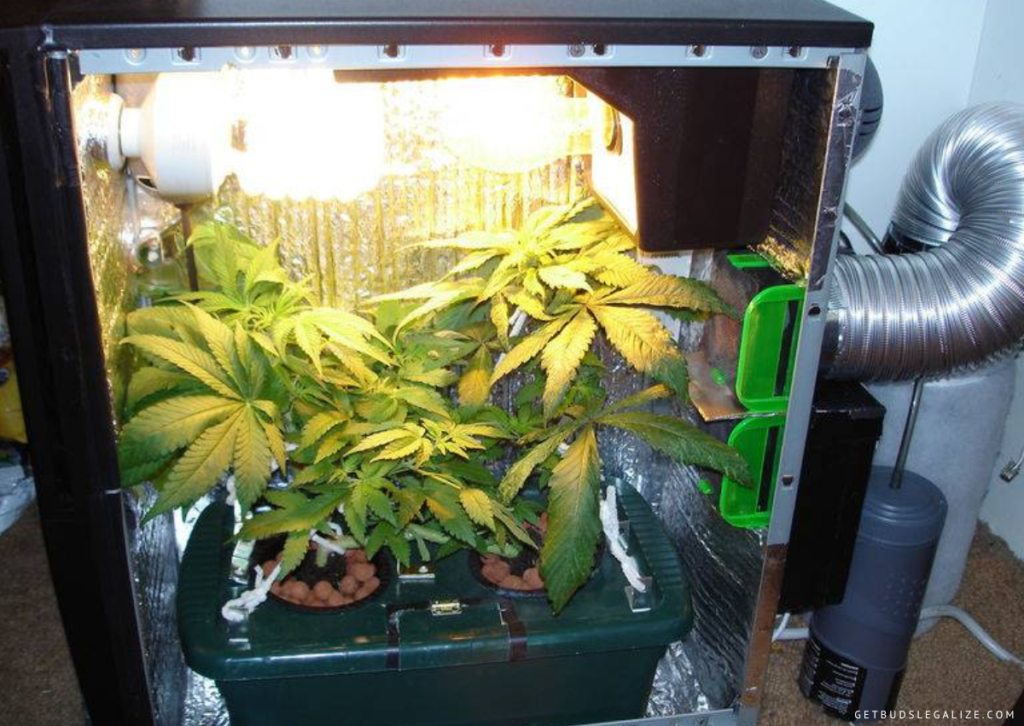
A micro cannabis grow is a small-scale grow that uses minimal space and resources. It can be done in a closet, a cabinet, a dresser, a PC case, or any other discreet and enclosed space. Micro cannabis grow can be a fun and rewarding hobby, but it also requires careful planning and ventilation.
The main challenge of ventilating a micro cannabis grow is finding a fan system that is small enough to fit in your space but powerful enough to provide adequate airflow and odor control. You also need to find a way to conceal the exhaust air and the noise of the fan.
One option is to use a PC fan with a DIY carbon filter and ducting. A PC fan is a small fan that is used to cool computer components. It can be powered by a 12V adapter or a battery. A DIY carbon filter can be made by filling a plastic container with activated charcoal pellets and drilling holes on both ends. The ducting can be made from flexible tubing or PVC pipes.
The PC fan should be attached to one of the openings of your micro grow space and connected to the carbon filter outside the space. The carbon filter will remove the odor from the exhaust air before it exits the space.
The intake air can be drawn from another opening on the opposite side of the space or from a passive vent at the bottom of the space. The passive vent does not require a fan but relies on natural airflow and negative pressure created by the exhaust fan.
The size of the PC fan depends on the size of your micro grow space and how many plants you have. You can use the same formula as above to calculate how many CFM you need for your space. For example, if your space is 2 feet long, 2 feet wide, and 3 feet high, it has a volume of 12 cubic feet. If you want 15 air exchanges per hour, you need 12 x 15 / 60 = 3 CFM.
However, since micro grows are usually very compact and have very little airflow than tents or rooms, you should quadruple or quintuple this number to account for heat and humidity buildup. Therefore, you should look for a PC fan that has at least 15 to 20 CFM for a 2 x 2 x 3 space.
How to Ventilate a Greenhouse
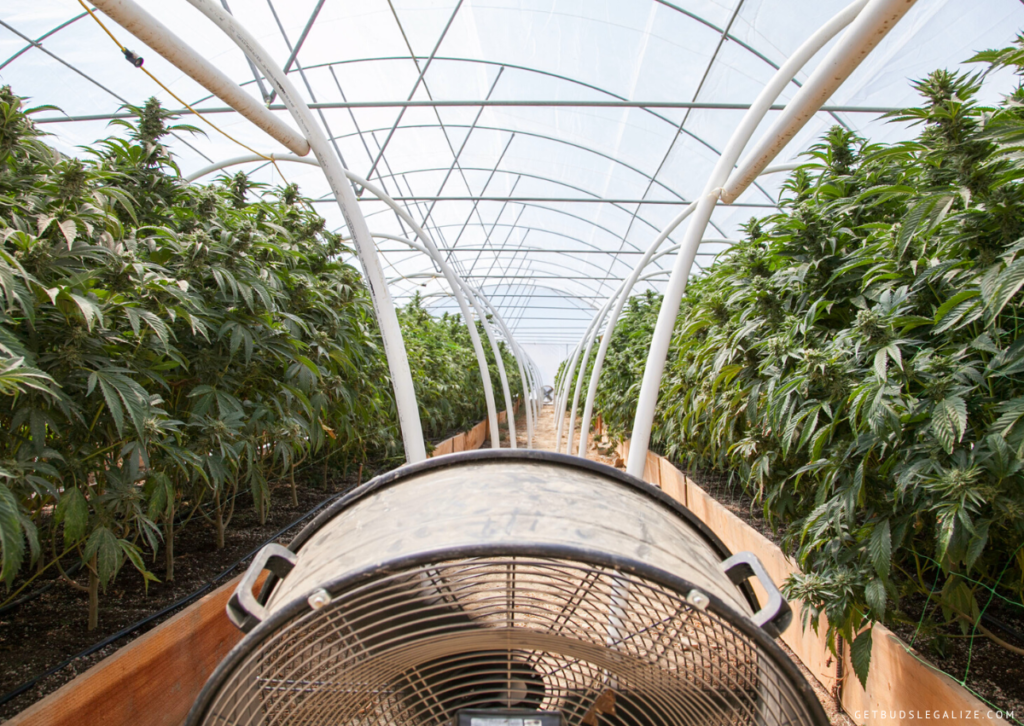
A greenhouse is a structure that uses transparent materials such as glass or plastic to trap heat and light from the sun and create an optimal environment for plants. A greenhouse can be used to grow cannabis outdoors in colder climates or extend the growing season.
However, a greenhouse also requires ventilation to prevent overheating, humidity issues, and odor problems. Unlike indoor grows, greenhouses do not rely on artificial lights that generate heat, but on natural sunlight that can vary depending on the weather and the season.
The easiest way to ventilate a greenhouse is to use natural ventilation with vents and fans. Vents are openings that allow fresh air to enter and hot air to exit the greenhouse. They can be located on the roof, the walls, or both. Fans are devices that help circulate the air inside the greenhouse and create negative pressure.
The size and number of vents depend on the size and design of your greenhouse. As a general rule, you should have at least one square foot of vent area for every ten square feet of floor area in your greenhouse. For example, if your greenhouse is 10 feet long, 10 feet wide, and 8 feet high, it has a floor area of 100 square feet. Therefore, you should have at least 10 square feet of vent area in your greenhouse.
The size and number of fans depend on how much airflow you want in your greenhouse. As a general rule, you should have at least one CFM of fan capacity for every square foot of floor area in your greenhouse. For example, if your greenhouse has a floor area of 100 square feet, you should have at least 100 CFM of fan capacity in your greenhouse.
However, these are only rough estimates. You also need to consider other factors that affect the airflow in your greenhouse, such as the temperature difference between inside and outside, the wind speed and direction, the number and size of plants, and the presence of filters or screens in the vents or fans.
Therefore, it is advisable to monitor the temperature and humidity levels in your greenhouse regularly and adjust the ventilation accordingly. You can use thermometers, hygrometers, or digital controllers to measure and control these parameters.
How to Ventilate a Basement Grow
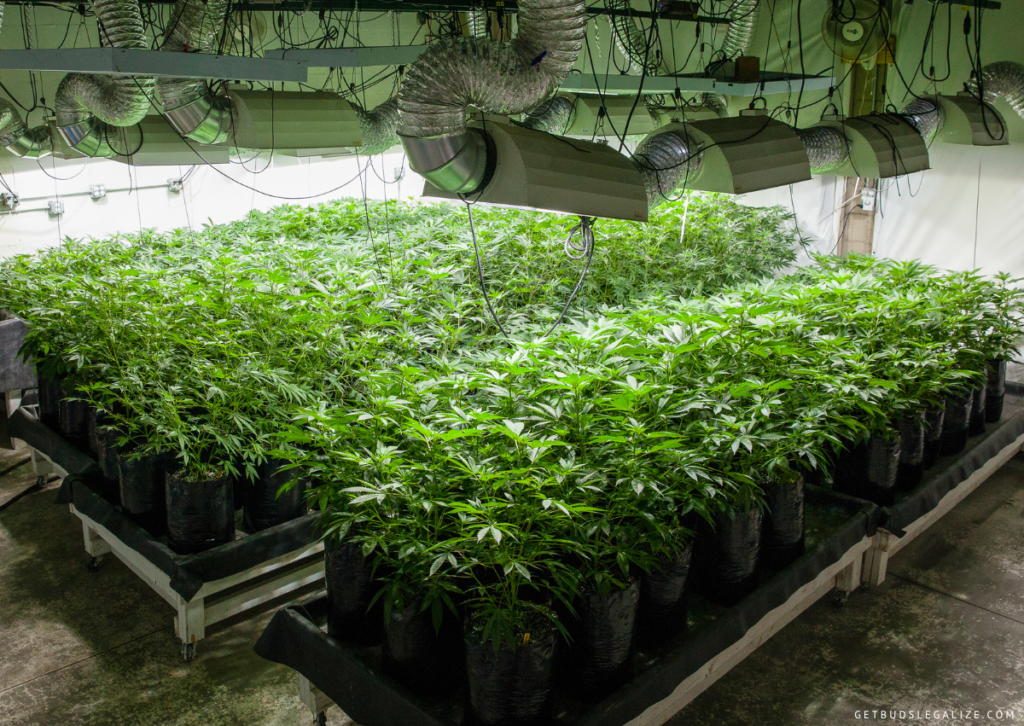
A basement is an underground space that can be used to grow marijuana indoors in stealth or security. A basement can offer more space and stability than other indoor grows, but it also requires more planning and ventilation.
The main challenge of ventilating a basement grow is finding a way to bring fresh air in and remove stale air out without compromising the stealth or security of the operation. Poor ventilation can lead to mold, pests, heat stress, and low yields. Good ventilation can improve the health, growth, and quality of the plants.
There are different methods and equipment for ventilating a basement grow, depending on the size, layout, and budget of the project. Some of the most common options are:
- Using exhaust fans and ducting to create negative pressure and pull air out of the basement through a window, vent, or chimney. This also creates a vacuum that draws fresh air in through passive intake holes or vents.
- Using an intake fan and ducting to push fresh air into the basement through a window, vent, or chimney. This also creates positive pressure that forces stale air out through passive exhaust holes or vents.
- Using a carbon filter and ducting to scrub the air of any odors before it exits the basement. This can be attached to either an exhaust or an intake fan, depending on the direction of the airflow.
- Using an air conditioner or dehumidifier to control the temperature and humidity of the basement. This can also help reduce odors and mold growth.
- Using oscillating fans to circulate the air within the basement and create a breeze for the plants. This can also help prevent hot spots and improve gas exchange.
The best ventilation system for a basement grow depends on several factors, such as:
- The size and number of plants
- The type and wattage of lights
- The climate and season
- The noise level and power consumption
- The legal status and risk of detection
It is important to plan ahead and test the ventilation system before starting a basement growth. A good ventilation setup can make a big difference in the success and safety of a basement growth.
Other Air Flow And Ventilation Tips
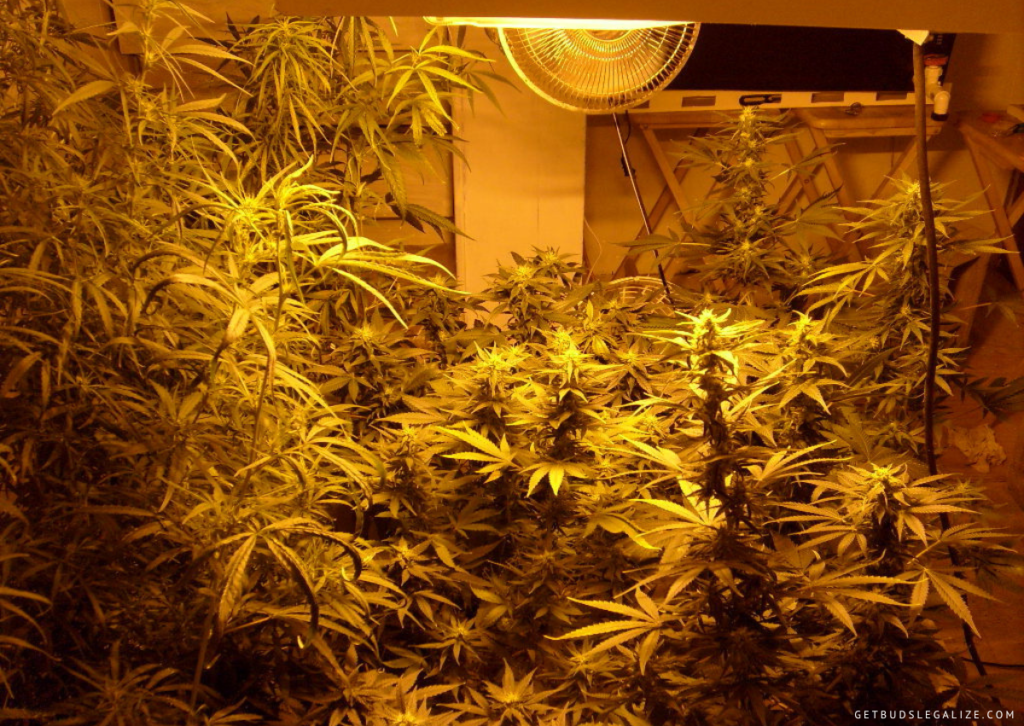
Besides choosing the right ventilation setup for your grow room, here are some other tips to improve your airflow and ventilation:
- Keep some space between your plants and the walls of your grow tent to allow air to flow freely.
- Prune your plants regularly to remove excess foliage and improve light penetration and air circulation.
- Use a hygrometer and a thermometer to monitor the temperature and humidity levels in your grow room and adjust your ventilation accordingly.
How To Manage Fan Noise
One of the drawbacks of using an air extractor fan system is that it can generate a lot of noise, which can be annoying for you and your neighbors. Fortunately, there are some ways to reduce or manage fan noise:
- Choose a high-quality fan that has a low noise rating and a high static pressure rating.
- Use insulated or acoustic ducting to dampen the sound from the air movement.
- Use flexible ducting instead of rigid ducting to avoid vibrations and rattling.
- Use duct clamps or tape to secure your ducting connections and prevent air leaks.
- Use rubber pads or foam blocks to mount your fans and isolate them from the floor or wall.
- Place your fans away from windows or doors that can amplify or transmit sound.
- Use a silencer or a muffler to muffle the sound from your exhaust fan.
- Use a speed controller to lower the speed of your fans when they are not needed at full power.
- Clean or replace your filters regularly to prevent clogging and reduce noise and odor.
Grow Room Air Conditioner
Another option to control humidity and temperature in your grow room is to use an air conditioner. An air conditioner can cool down the air in your grow room and remove excess moisture, which can prevent heat stress, mold, and pests. However, an air conditioner also has some drawbacks, such as:
- It can be expensive to buy and operate, especially if you have a large grow room or live in a hot climate.
- It can dry out the air too much, which can cause low humidity problems such as wilting, curling, and nutrient lockout.
- It can interfere with your ventilation system, which can reduce the airflow and the CO2 levels in your grow room.
- It can be noisy, which can be annoying for you and your neighbors.
Therefore, before using an air conditioner, you should weigh the pros and cons and consider other alternatives such as:
- Using LED lights instead of HID lights, which produce less heat and use less electricity.
- Using a dehumidifier instead of an air conditioner, which can lower the humidity without affecting the temperature or the ventilation.
- Using a swamp cooler instead of an air conditioner, which can cool down the air by evaporating water without drying it out.
Final Thoughts
Cannabis grow tent ventilation is an important factor for successful indoor growing. It can affect the health, growth, and yield of your plants, as well as your comfort and safety. By choosing the right ventilation equipment, calculating the required airflow, and following some of our tips, you can guarantee optimal conditions for your lovely plants, and ensure a perfect outcome. Always monitor temperature and humidity levels in the grow room and adjust ventilation accordingly. Happy growing!
FAQS - cannabis grow tent ventilation
Air flow is vital for cannabis plants, as it stimulates their growth, strengthens their stems, and enhances their resistance to diseases. Without proper airflow, the plants may suffer from heat stress, nutrient burn, or bud rot.
Yes, cannabis seedlings need airflow, but not too much. A gentle breeze from a small fan is enough to provide them with enough carbon dioxide and prevent damping off. However, avoid placing the fan directly on the seedlings, as it may damage their delicate leaves.
There is no definitive answer to this question, as it depends on your personal preference and the size of your tent. Installing the extractor fan inside the tent may save some space and reduce noise, but it will also increase the temperature and humidity inside the tent. Installing the extractor fan outside the tent may improve air circulation and lower the temperature and humidity, but it will also take up more space and create more noise.
The ideal air exchange rate for a grow room is between 20 and 30 times per hour. This means that the entire volume of air in the room should be replaced by fresh air every 2 to 3 minutes. To calculate the air exchange rate, you need to know the volume of your grow room (length x width x height) and the capacity of your extractor fan (cubic feet per minute or CFM). Then, divide the volume by the capacity to get the number of minutes it takes to exchange the air. For example, if your grow room is 10 x 10 x 8 feet (800 cubic feet) and your extractor fan is 200 CFM, then your air exchange rate is 800 / 200 = 4 minutes.
Passive intake is when you rely on natural air pressure to draw fresh air into your grow tent through vents or holes. Active intake is when you use another fan to push fresh air into your grow tent. Passive intake is cheaper and simpler, but it may not provide enough airflow for larger tents or hotter climates. Active intake is more expensive and complex, but it gives you more control over the airflow and pressure in your grow tent.
The essential tools for efficient grow room ventilation are:
- An extractor fan: to remove stale air, heat, and humidity from your grow tent.
- A carbon filter: to eliminate odors and filter out dust and pathogens from your exhaust air.
- A ducting: to connect your extractor fan and carbon filter and direct the exhaust air outside or into another room.
- An intake fan (optional): to supply fresh air into your grow tent.
- A speed controller (optional): to adjust the speed and noise of your fans.
- A hygrometer: to monitor the humidity levels in your grow tent.
- A thermometer: to measure the temperature in your grow tent.
The optimal temperature and humidity for cannabis plants depend on the stage of growth, the strain, and the environment. Generally, cannabis plants prefer a temperature range of 20-28°C (68-82°F) and relative humidity of 40-60%. Seedlings and clones may need higher humidity (60-70%), while flowering plants may need lower humidity (40-50%) to prevent mold and bud rot.
ILGM Fertilizer

- From seedling to harvest, give your plants everything they need.
- Enough for feeding at least 5 plants.
- Discounted Package Deal
- Works well in soil, hydroponics, and other growing mediums.
- The best way to treat your plants
ILGM Plant Protector

- Protect your cannabis from diseases and harmful pests.
- Contains three 20 ml bottles.
- Enough supplies to protect 20 plants.
- It can be used in soil, hydroponic, and all other growing mediums.

